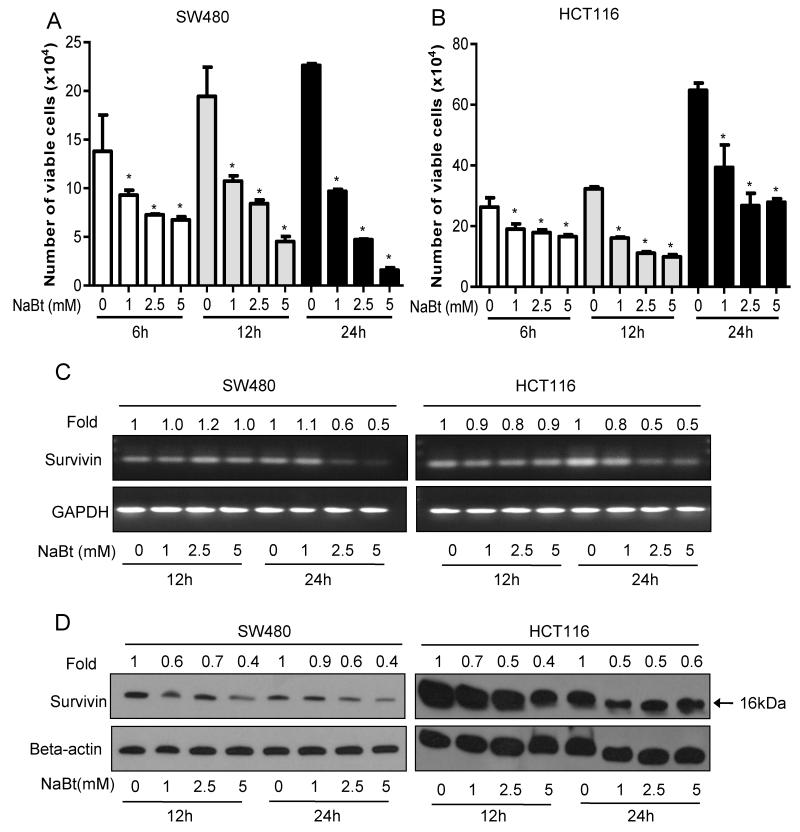Figure 1.
Effects of NaBt on survival of human CRC SW480 and HCT116 cells. For the studies assessing the effect of NaBt on survival of exponentially growing SW480 and HCT116 cells, 105 cells were plated in 60-mm dishes and next day, treated with vehicle (distilled water) alone or 1-5 mM of NaBt in fresh medium. After 6, 12 and 24 h of these treatments, viable cells were counted using trypan blue staining and hemocytometer. The cell number data shown was mean ± SD of three independent plates; each sample was counted in duplicate. Data was analyzed using one-way ANOVA Dunnett’s test. *, P<0.05, significantly different compared with corresponding control. (A) Represents the viable cell number for SW480 cells; (B) Represents the viable cell number for HCT116 cells. After treatment with NaBt for 12 and 24 h, RNA and protein were extracted as detailed in Material and Methods, and (C) semiquantitative reverse transcription (RT)-PCR and (D) western blot analysis was done for survivin in both of the cell lines along with the loading controls, GAPDH and beta-actin, respectively. Band intensity was analyzed by densitometry in each case and was represented as fold change to that of their respective control, and shown at the top of each band (C-D).

